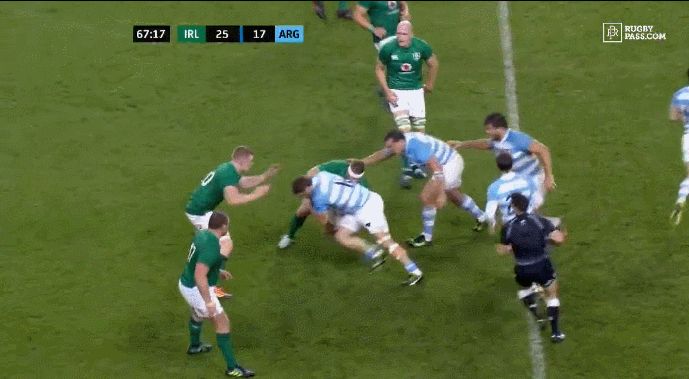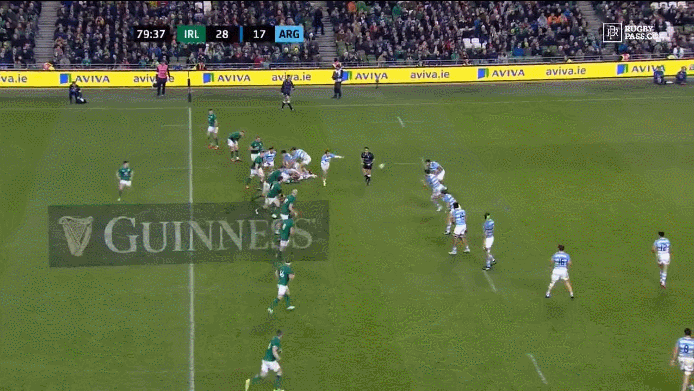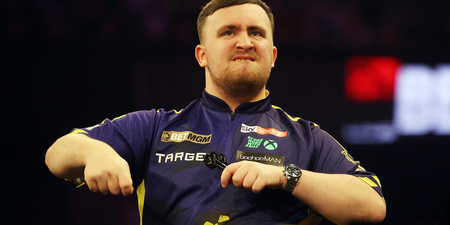You can only help but feel for Sean O’Brien.
A combative, robust and brilliant flanker that has had a career hampered by injury. O’Brien started his first game for Ireland in just under a year against Argentina on Saturday but was pulled ashore towards the end of the first-half after fracturing his arm. It was both sad and tragic for the two-time Lions tourist and he knew in an instant that another long bout of rehabilitation awaited him.
Broken limbs have become as much as a part of the Tullow flanker’s career as broken tackles, but in his absence at both Leinster and Ireland, Dan Leavy has thrived.
The 24-year-old had played just four games for Ireland before this year’s Six Nations but immediately established himself as an integral part of the Grand Slam winning squad.
O’Brien’s return this month ultimately displaced him from the starting pack but he showed in 42 minutes against Argentina at the weekend that he has done more than enough to win his place back.
Firstly, Leavy doubled O’Brien’s carries (eight runs for 30 metres compared to four runs for two metres) and tackles (seven to three) and he was a constant presence at the breakdown.
With David Wallace and O’Brien very much owning the Ireland seven jersey for the most part of the last 18 years, Irish sides have typically been accustomed to strong ball carriers on the openside of the scrum but Leavy follows a more traditional view of what we would typically expect from the position.
He is tenacious, willing and technically gifted at getting over the top of the ball and pinching possession back for his side.
In the clip below we can see Leavy immediately latch himself onto the ball carrier after CJ Stander makes the tackle. His body height is excellent but ultimately he beats Tomas Lavanini to the ball and spreads his legs to establish a strong base where he cannot be pushed off his position.
Later in the half Leavy produces another turnover and again he’s first to the ball and gets in a great position to win the turnover.
Ireland substitute hooker Sean Cronin makes the tackle and you can see Leavy stray off and backpedal before latching onto the ball carrier and winning the turnover.

Leavy won 14 turnovers last season, the most of any player on the Leinster squad, and he has said that he’s had lengthy discussions with senior coach Stuart Lancaster about how and when to go for the steal in defence.
“Stuart and I have talked a lot about the breakdown and how he wants to play me, there might have been a different system around before him, but he’s definitely helped me a lot, as has John Fogarty (Leinster scrum coach),” Leavy told SportsJOE earlier this year.
“There is always little things you can brush up on, making sure discipline is good and not giving away silly penalties, but no one is the finished article.
“I watched David Pocock over the summer and I think he’s pretty unique in his style in how he’s able to do it. He’s a little bit shorter and he’s able to get his leg around and get over the ball quickly but you’re always looking at guys and trying to pick up tricks.
“Some lads don’t even go for the ball they just try to go for the counter-ruck and make a mess of things but it’s all about having everything in your arsenal and choosing the right time to do what.
“Maybe you take a risk on a ball, maybe you leave it, but it’s a lot of decision making. We’d do a lot of breakdown work with Fogs and it pays off.”
The key to Leavy’s play, whether it’s in attack or defence, is that he’s always looking to get around the ball. His support play is key and his pick and drive that was held up over the line against Argentina ultimately created the opportunity that led to Luke McGrath’s try from the ensuing scrum on the very next play.
Below we can see further evidence of Leavy’s support and it’s a great passage of play from Ireland where they exploit Argentina’s numbers on the shortside with Peter O’Mahony, Jordan Larmour and Leavy all holding their width well and supporting each other without clogging up the passing lanes or obstructing the path of the support runner.

It’s also worth noting here that both Jacob Stockdale and Keith Earls are involved in the play and it’s indicative of both of their games that they come looking for work off their respective wings.
By the time Earls is eventually hauled down in the Argentina 22, Ireland have enough support to clear out the ruck and protect the ball.
Leavy has been deployed at both six and seven for Leinster over the last year but he ultimately prefers playing seven because he feels he can be a lot closer to the ball.
“I’ll play six if the team needs me to play six but you’re more involved in the game at seven and you’re never too far away from the ball. At six you could be holding the width, it’s more of a line-out orientated job and you could be in and out of the game.
“I prefer to be around the ball as much as I can and make an impact.”
Below we can see exactly why. It’s the final minute of the game and Devin Toner and James Ryan have just forced a turnover and Leavy instinctively dives on the ball to secure possession.
Ireland have secured the win and Leavy proceeds to get up from the turf and pat each one of his teammates on the back.

As efficient as he is over the ball, and as good of a support player as he is, it’s his effort, his drive and his desire that ultimately underpins so much of his play.
Whether it’s diving on loose balls or getting himself into positions where he can poach the opposition’s ball, Leavy consistently throws himself into positions where he can make an impact.
The loss of Sean O’Brien is significant, especially against a swarming All Blacks defence, but in Leavy Ireland have a player that can make an immediate contrbution to what is already a very strong pack.











































